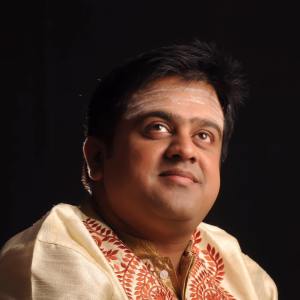A clip of international mridangam virtuoso Shri Pirashanna Thevarajah performing Konnakkol piqued my curiosity about the art form. Traces of past memories formed a pattern in my mind for it was not the first time I was listening to these sounds. Like most of the population, I was exposed to these sounds through popular culture. It was only on listening to the aforementioned clip that realization dawned. The turn of events was such that Shri Jois and Shri Thevarajah would be my primary sources for an enjoyable and educative assignment on Konnakkol that I took up last semester.
Shri Jois is a radio jockey turned Konnakkol Vidwan based in Bengaluru, India. Without further ado, here’s the transcript of our telephonic interview. (do click on the hyperlink as you read the interview)

Me : Is Konnakkol is a dying art form?
Vidwan Shri BR Somashekar Jois: It is artists and not the art form that is dying. Artists are diminishing because of limited performance aspects in Carnatic music. The scenario in which Konnakkol was a dying art form was prior to the advent of social media. With Facebook and several other media, there is now a huge rage for Konnakkol. That being said, Konnakkol is yet to attain prominence within the Carnatic music hierarchy despite it being the most attractive art form.
With respect to the technical handicap involved, there were no well developed speaker systems in the early days. Even with the advent of the microphone in the Carnatic concert, the one microphone used by the vocalist had to be shared by the percussionists. As the motive of every artist was to vocally reach the audience members that sit even at the last row, it proved to be difficult for the Konnakkol artist to do so. The latter had to use higher pitches and tone to shout out the syllables. This turned out to be an unpleasant experience for the audience. In the present scenario, technology enables the rendition of Konnakkol in rich tonality and voice texture to entertain and enrich people. There still remains a notion that Konnakkol is unpleasant. Thus for a long time, it was relegated to Talavadya Kutcheries or percussion ensembles.
Me: How is Konnakkol a way of life?
VBRS: No other percussion in South India can be learnt without Konnakkol. It is the mother of all percussion. The major end of most all art forms around the world is to entertain but that’s not the case with Konnakkol. Konnakkol is a way of giving back to the society as it is used to treat children with stammering problems, cerebral palsy and speech issues.
Me: How old is this art form and how has it evolved over the ages.
VBRS: Konnakkol is part of the Vedas and Ayurveda. It belongs to a tradition that is 7000 years old. You can find references to it in Bharata’s ‘Natyashastra’, in The Ramayana, the Mahabharata and in more than a hundred and fifty of Arunagirinathar’s (14th century) ‘Thiruppugazhs‘. An example of Konnakkol in the Thiruppugazh would be in the very first one ‘Mutthai Tharu’
“Thikku-pari-atta-payiravar
Thokku-thogu-thokku-thogu-thogu
Sithrap-pagu-rikku-thriga-daga yena votha…”
It was Vidwan Shri Mannargudi Pakkiriah Pillai, an 18th century maestro who resurrected Konnakol and brought it to Carnatic music.
Me: What are the etymological origins of the word ‘Konnakkol’?
VBRS: Nowhere in history do you get access to the word ‘Konnakkol’. There is no authentic reference point of origin as there is some degree of ambiguity. It cannot be that ‘Konnakkol’ originally meant ‘to stammer’ as the art form involves the clear enunciation of syllables. It consists of ‘solkattu’, ‘sol’ meaning syllables and ‘kattu’ meaning group or bunch. Konnakkol is the art of reciting Solkattu.

Lovely.
LikeLiked by 1 person
Thank you so much, uncle!
LikeLike